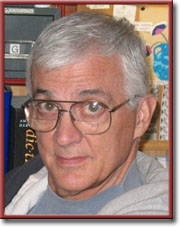Tough but Fair: Grades & Evaluations

“As inadequate a representation as one letter is of a year’s work, there are worse ways to evaluate people. In the 17th century, Harvard graduated students by their social rank, not their grade-point averages, for GPRs did not exist until the 19th century. In other words, the aristocrat with an endowed future received his diploma before the smartest, hardest working son of a farmer. The colony’s smartest daughters stayed home and learned to darn.”—By Skip Eisiminger
Skip the B.S.
By Skip Eisiminger

“When judging ragout, not carrots or meat,/find the gestalt, and let the brain eat.”—The Wordspinner
“The apprentices have seized the reins,/and the master is left groping the mane.”—The Wordspinner
 CLEMSON South Carolina—(Weekly Hubris)—7/14/2014—As a student who was graded for 20 years and a teacher who graded for 40 more, I remain convinced that tough but fair grading is a powerful incentive which encourages hard work and, ultimately, learning. However, assessments by teachers and self-assessments by students seldom coincide. After giving one young man a B for the term, he came to my office to complain. “I cannot take a B in your class,” he whined, “if I want to enter med school.”
CLEMSON South Carolina—(Weekly Hubris)—7/14/2014—As a student who was graded for 20 years and a teacher who graded for 40 more, I remain convinced that tough but fair grading is a powerful incentive which encourages hard work and, ultimately, learning. However, assessments by teachers and self-assessments by students seldom coincide. After giving one young man a B for the term, he came to my office to complain. “I cannot take a B in your class,” he whined, “if I want to enter med school.”
“And I cannot give you an A,” I replied, “if I hope to enter heaven.”
Like my colleague the novelist Mark Steadman, I soon grew weary of telling people what I thought of their writing, but I cannot imagine the higher-educational enterprise without a terminal narrative, number, or letter, for grades have been an integral part of my life for a long time.
In the spring of 1939 at the University of Illinois, the man who would become my father was nominated for the ROTC “Honor Graduate” award at the start of his final semester. However, a “personality conflict” developed, as my father put it, between him and the instructor of Engineering Design 401. The upshot was an F in this required course that was not being offered again until the following spring, so he lost his scholarship and went home in disgrace.
His commission was presented to his roommate, who was sent to Bataan in the summer of 1939.
Though this was the end of the Great Depression, Dad did find work cleaning chemical drums at an East St. Louis refinery after being turned down by over 90 employers. Living at home, he saved his money, went back to Champaign-Urbana in the spring of 1940, and enrolled in a section of the course that he needed but taught by a different instructor. This time, he made an “A” and graduated. That summer, with commission in hand instead of being shipped to the Philippines, he was sent to Ft. Benning, Georgia, where he soon met and married the woman who would become my mother.
Incidentally, Dad’s former roommate was killed on the infamous Death March while attempting to escape his Japanese captors.
This tale gives me goose bumps every time I think about the handful of points in a grade book that determined the death of one man, my own existence, and the lives of my children. If nothing else, Dad’s failure has forced me to think hard about the judgments I once passed on students. Though I’m still evaluated by my OLLI (Osher Lifelong Learning Institute) students, I volunteer to teach in my retirement only because there is no grade to award.
Twenty years after my father’s failure, I failed freshman English at Georgia Tech. I was so stunned, angry, and demoralized that I enlisted in the army and requested an assignment in Germany. I had no interest in cleaning chemical drums, and the war we were fighting in 1960 was considerably cooler than the two my father had fought in. I needed some time to determine what I wanted to accomplish in life and why I’d chosen to major in engineering when what I loved most were books. At Tech, we had not read a single novel or poem that fall quarter, and four misspellings in any written assignment spelled “F,” regardless of the content. Though Mother and Dad were not happy with my decision, I felt it was best for me.
After basic training and “countermeasures search and analysis” schooling, I was stationed near the Iron Curtain to record whatever electronic signals managed to escape. Here, with a rough mosaic of college dropouts like myself, I had ample time to read for the first time in my life without the fear of being graded. As a result, Remarque, Steinbeck, Spillane, and others became my silent but eloquent instructors, and when I re-entered college four years later, I made an “A” in freshman English.

One of my favorite Mike Twohy cartoons, one I sent to a nephew on the occasion of his high-school graduation, shows heaven’s latest incredulous candidate standing before St. Peter saying, “You’re kidding! You count SATs?” Yes, they do count and, as I once teased my nephew, they go on your “permanent record.” Still, as William Cameron observed, “Not everything that counts can be counted, and not everything that can be counted counts.”
As inadequate a representation as one letter is of a year’s work, there are worse ways to evaluate people. In the 17th century, Harvard graduated students by their social rank, not their grade-point averages, for GPRs did not exist until the 19th century. In other words, the aristocrat with an endowed futures received his diploma before the smartest, hardest working son of a farmer. The colony’s smartest daughters stayed home and learned to darn.
When letter grades were introduced in this country in about 1860, A’s were evidently harder to earn than they are today thanks to the bell-curve theory. Using this template, 5-10 percent of all students would make A’s, and 5-10 percent would fail. The rest were evenly distributed in between regardless of their abilities. A few teachers such as Fritz Reiner objected to the rigidity of the curve which many regarded as a straitjacket. In his teaching career at the Curtis Institute, Reiner gave a single A, and this he gave to Leonard Bernstein. No doubt, it was well deserved. However, in many academic departments today, 90 percent of the grades are A’s, and the F has all but been abolished as it actually was at Stanford in 1969.
But imagine giving Robert Frost a B- for his “Tuft of Flowers,” or William Faulkner a D in freshman English even if he did over-cut. At the other extreme is the case of William James’s arbitrary bestowal of the highest grade in the class on Gertrude Stein even after she skipped the final exam because, as she wrote in a petulant fit on the otherwise blank test paper, “I do not feel a bit like an examination paper in philosophy today.”
But my favorite grade mishap involves Maya Lin and her proposal for the Vietnam Veterans Memorial. A Yale architecture professor gave her a B+ in the course in which she had submitted her plan, while his own plan was being rejected by the memorial’s selection committee. This esteemed group of veterans and architects awarded Lin an A+, and today most visitors to the poignant black-granite wedge buried at the National Mall would agree with that assessment.
Lin has said that one factor which allowed a young Asian woman to win this competition was the blind submission process. Though I rarely graded blindly myself, I realize this is the most objective way to judge a written work. I’m told that a math teacher at a local high school once failed her own son in algebra. I’m fortunate that I never had to grade our children because I doubt that I could have been objective. I appear to be missing the attribute which allowed Dietrich Bonhöffer to fail a woman he was falling in love with and then married a few months after the grades were posted.

Samuel Johnson thought only his tailor measured him correctly and, thanks to high-speed photography and computers, we now know that 14 percent of all non-swung-on pitches are called incorrectly by major-league umpires. Nevertheless, we ask college freshmen to evaluate seasoned classroom teachers.
After four decades of teaching and four years of hindsight, I’m sure that nothing hurt my teaching and that of my colleagues more than the practice of undergraduates evaluating their professors. Some of the untenured, I’ve been told by students with a wink, give extra credit if they will go online to fill out the evaluation form. It’s a subtle form of blackmail. And yet I know that if I think I’m an effective teacher and most of my students disagree, there is something wrong. The fix in my opinion requires the recognition that the classroom is not a pure democracy. Second, we need to switch to peer evaluations, because not every professor is a conscientious student of his or her teaching.
But are peer-review committees, department heads, and deans infallible in their judgment? Consider this: Harvard failed to grant tenure to Supreme Court Justice Ruth Bader Ginsberg, Pulitzer Prize winning astronomer Carl Sagan, and Nobel Prize winning economist Paul Samuelson.
A colleague in engineering tells me that because of the pressure exerted by student evaluations, many teachers give partial but generous credit for incorrect answers to complex problems. Consequently, it is theoretically possible for a student to graduate with a C average without ever getting a single problem right. Think of that the next time you cross a bridge.